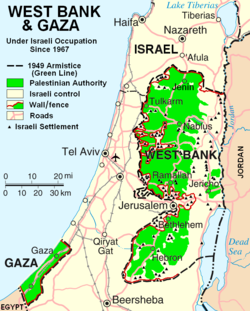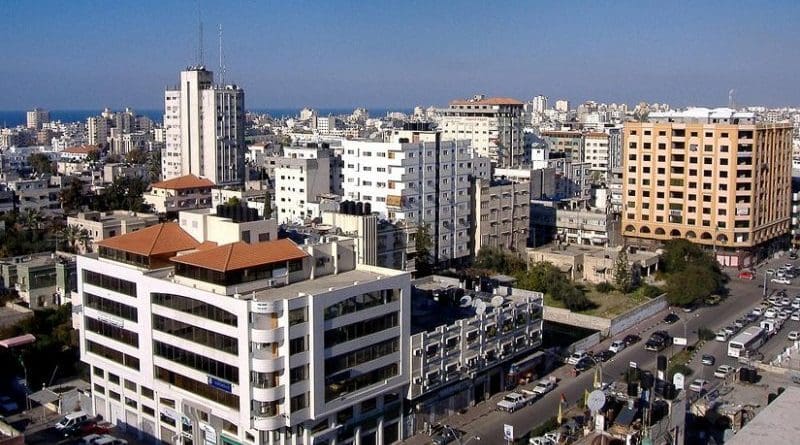Israel, Gaza And The Mideast: An ‘Indirect Approach’? – OpEd
By Zenonas Tziarras and Panagiotis Andrikopoulos
This article is overreaching and it does so because it accepts one axiom: the only politics that matters is the politics that happens “under the table”. While this does not refer to conspiracy theories it does imply that most people do not know most of the things that shape the socio-political and economic realities of our world. Therefore when a political situation unfolds, depending on the broader context, one has to try to look at the bigger picture; in other words, try to think “outside the box”, if they would like to decode what the reality might be.

Having said that, strategic thinking could help us find unconventional solutions to problems as well as better understand real situations. One of the greatest strategists of the 20th century, Basil Liddell Hart, argued that the more indirect the strategy, the shorter the way to the end, and the more decisive the results. Looking at the unfolding events in Gaza through this prism, even though Israel’s approach may be indirect in tactical terms, as it is based on artillery and airstrikes for now, the ‘indirect’ here does not refer to Israel’s operations in Gaza but to the role these operations play in a possible greater ‘indirect’ strategic plan of the West.
This means that, at this juncture, we are looking at the Middle East as a chessboard whereon western and non-western powers clash, and pawns (of different value) such as Israel, Hamas, Syria, Turkey, Iran, Russia, the US and others have a role in the moves that lie ahead. Within this framework there are two questions to be answered: 1) what is the grand strategic aim of the West? Put simply, what is the geopolitical end-game that the West aspires to – in the Middle East? And 2) what micro-strategies/tactics (including ‘indirect approaches’) will be employed in order for this aim to be achieved? Lastly, there is one simple question that triggers and drives the whole discussion: why Gaza, and why now?
As widely spread analyses have it, one reason why Israel is bombing Gaza so relentlessly is the fact that Israeli elections are coming up in January and the current government would like in this way to secure a victory. In making this argument analysts draw parallels between the commonalities of the current political context and the one during Israel’s 2008 bombing of Gaza. This may well be the case and this article is by no means disputing such a possibility.
It could also be the case that Israel seized the retaliation opportunity that it was given, to launch a greater operation that would cause vital hits to Hamas’ fighting machine, thus disempowering it. These could answer the “why Gaza, why now?” question. However, the outlook that leads to such answers seems very narrow. Going back to what is the grand strategic aim of the West, and looking at the broader geopolitical context of the Middle East, one has to agree with what Henry Kissinger wrote in the Washington Post (Nov. 17th): “the most urgent decision facing the president is how to stop Iran from pursuing a military nuclear program”. In this light all the threads of the West’s Middle East strategy at this point seem to be connected to that.
Why Gaza, why now? Israel has received hundreds of rocket attacks over the past year; why should this be the point where it draws the line and decides to retaliate? Let us first recall that the American elections, which have been a constraining factor for Israeli action in the Middle East, are conveniently over.
It is also crucially important that the whole geopolitical landscape of the Middle East has changed after the domino of the Arab Uprisings and is indisputably different than 2008. Moreover the Syrian crisis in particular poses both a threat and an opportunity at the same time for Israel and the West. On the one hand the alteration of the status quo is always followed by uncertainty while on the other hand, as Syria and Iran are important non-western allies in the region, Iranian policy-makers are aware of the fact that should the Syrian stronghold fall, Iran would lose the only ally in its neighborhood and what would be left would only be the support of non-state actors such as Hamas and Hezbollah.
Therefore, it is evident that an indirect way to get to Iran would be to get to Syria, Hezbollah, and Hamas; after all, a direct confrontation with Iran would be very messy and perhaps even drag other powers into conflict – such as Russia – as well. The ultimate goal may not necessarily be the military defeat of Iran but rather its regional weakening and the undermining of its diplomatic leverage or deterrent capabilities in order for an effective (for the West) political agreement to be reached. From that perspective, one part of the ‘indirect approach’ would be to eliminate Hamas’ military power and thus cut off one of Iran’s most important proxies. Syria’s deteriorated relations with Hamas make this task easier.
The second part has direct links to what is going on in Syria. While international community’s attention has been focusing on Gaza, tensions between Israel and Syria on the Israeli-occupied Golan Heights continue to build-up. The accidental (or not) Syrian hits on the Golan Heights could be another pretext for Israeli retaliation against Syria.
But why should Israel get involved in the Syrian case? At the moment, the only militarily strong allies of the US in the region are Turkey and Israel. Since Americans neither want to get militarily involved again in the Middle East and revive the anti-Americanism that Bush’s administration caused, nor get stuck in another Iraq- or Afghanistan-like morass, another actor has to undertake the task (as for example happened in Libya where the US played a secondary role).
In the Syrian case in particular, Turkey became like a second home for many American officials: “You are one of our strongest allies in the area and we’ll support you by all means to take Assad out of the way” could be something that US officials would normally say to Turks. However, Turkey did not succeed in replacing the Assad regime.
Where, then, would Obama’s attention turn to next? The best and probably only option would be Israel, the other strongest ally of the US in the Middle East. Eventually, bringing Assad down practically means undermining the foundations of Iran’s regional power; something that must happen at all costs.
To summarize, Tehran has close ties with Assad’s regime and it cannot afford to lose such a key ally in the area. That would isolate Iran and turn it into the next possible target of the West. It has been made clear that both Hamas and Syria maybe parts of an ‘indirect approach’ that aims at limiting Iran’s regional power.
At the same time, although Hezbollah remains a threat for Israel and western interests it is preoccupied – at least for now – with the spillover of the Syrian civil war into Lebanon. Obama’s second administration will most likely continue the “back-seat” policy and have only a secondary role in the Middle East as we saw in Libya.
Therefore, Assad’s regime will have to fall through America’s regional allies, namely, Turkey and/or Israel. Since the former proved inadequate or even unwilling, it seems that key player in this possible unfolding strategic plan is Israel as that would serve not only the American interests but also the Israeli ones – since Israel’s current biggest threat is Iran. By weakening Tehran’s allies, everything would be set for the final act and last move of this “chess game” – the neutralization of the Iranian nuclear threat.
Authors’ Note: Zenonas is responsible for most of the introduction and the ‘first part’ of the approach whereas Panagiotis is responsible for the ‘second part’ and most of the conclusions.

